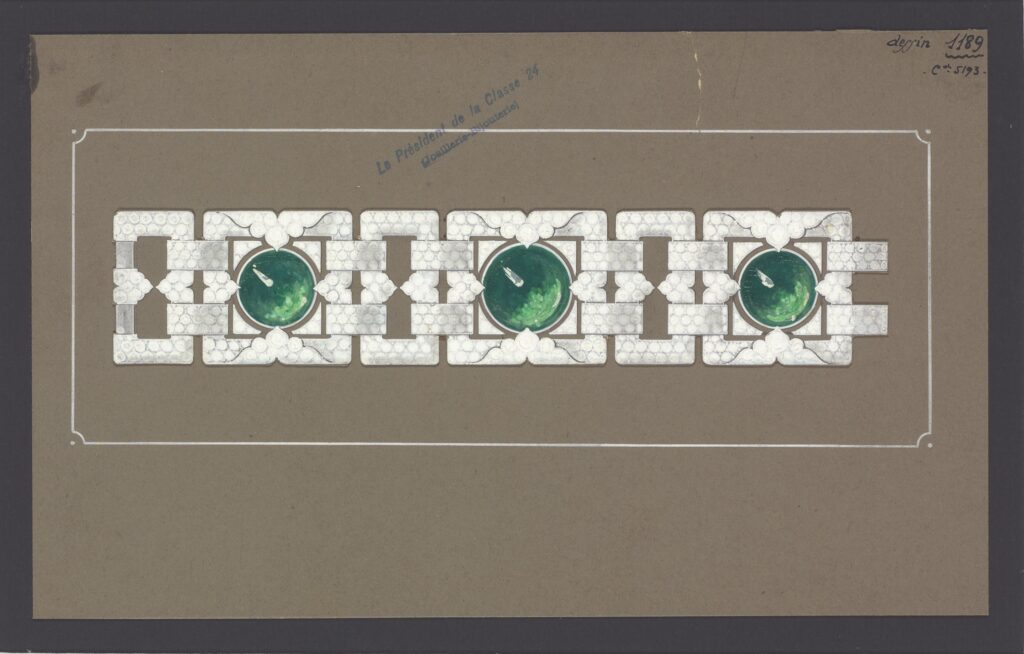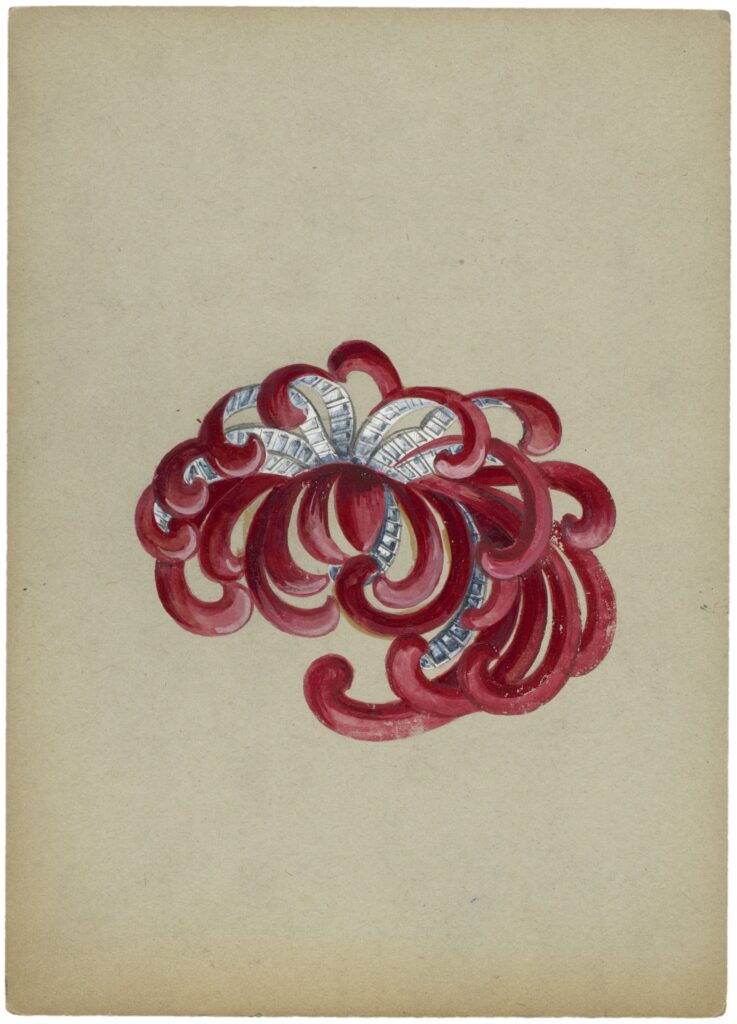Newsfeed
One of the great joys of discovering high jewellery is how it evokes the sense of serendipitous discovery – that moment when you turn a corner, the light catches a brooch or necklace, and you feel that quiet jolt of luck. And through its rich thread of symbolism and treasured talismans, the Timeless Art Deco with Van Cleef & Arpels High Jewelry exhibition in Tokyo does just that…
Hosted in the graceful halls of the Teien Museum – originally built in 1933 as the residence of Prince Asaka, a rare surviving example of Art Deco architecture in Tokyo – the exhibition presents approximately 250 creations from the Maison’s patrimonial collection (dating from the early 1900s through to the 2000s), alongside some 60 archival documents. From bold floral bracelets of the 1920s to the signature clover motif of the Alhambra collection, the show weaves through four thematic chapters: the emergence of Art Deco, the flowering of the style in the 1920s-30s, the golden age of jewellery innovation, and the “Garden of Savoir-Faire” where techniques such as Mystery Set, transformability and enamelling present their subtle magic.
Where architecture and jewellery meet
Museum scenographer Tezzo Nishizawa speaks of this project as a unique challenge. “I asked myself, ‘what is the function of a museum’?,” he recounts to GRAZIA. “What kind of behaviour would people display in that museum? What kind of answer does the museum have to provide people? What are audience going to see in that exhibition? How should the pieces displayed should be shown? Usually in architecture, you start from scratch. But with this, we have the jewellery, but we also have the architecture of the building. And deciding on the scenography was a challenge.” In other words, the rooms themselves – an outgrowth of Art Deco splendour – become part of the story rather than mere frames. Tezzo explains that in the small guest room, the green marble (‘jamonga’) of the walls became the cue for his palette; in the second room, he introduced dual textures and materials to echo duality in the jewellery; and by the third room he began to step back, allowing the architecture and light to speak and letting the pieces themselves assume centre stage. The result is a choreography of rooms in which architecture, light, jewellery and viewer all engage in elegant dialogue.

Serendipitous Discovery
One of the great joys of the exhibition is how it evokes the sense of serendipitous discovery – that moment when you turn a corner, the light catches a brooch or necklace, and you feel that quiet jolt of luck. The floral bracelet Entwined Flowers, Red and White Roses (1924) is displayed as one of the key works that won the Grand Prize at the 1925 International Exhibition of Modern Decorative and Industrial Arts in Paris – an event that established Van Cleef & Arpels’ status in the Art Deco canon. As the maison’s Patrimony Director Alexandrine Mavel Sonet explains: “The Maison was so innovative in embracing the Art Deco movement that they gained recognition for its creativity – a strength that would sustain all the extraordinary invention that followed in the 1930s.”

That sense of intention meets the spirit of chance: the rose-shaped diamonds and rubies, the stylised leaves, the bead settings – they speak of a house constantly negotiating between the restraint of craft and the sudden gleam of inspiration. The visitor feels, as in luck, that they happen upon the moment when technique becomes poetry. “The piece that represents ‘luck’ the most for me are the wooden watches,” says says Alexandrine. In the early ’20s we had pieces created during the First World War. They were made to be easily worn, so you can practice sport – but was also in the spirit of the Art Decor period. Wood was perfect because it was not so fragile or precious. It feels lucky, this type of wood.”
The clover that brought luck
Which brings us, of course, to the motif that so beautifully exudes Lady Luck: the Alhambra. Though this particular exhibition is centred on Art Deco, the fourth chapter, ‘Garden of Savoir-Faire’, makes space for the clover motif and hence for that rich thread of symbolism.
Since as early as 1906, the Maison’s archives show the four-leaf clover. “To be lucky, you must believe in luck,” once said Jacques Arpels, and he famously gathered four-leaf clovers in his backyard, presenting them to his staff along with the poem “Don’t Quit.” The first Alhambra long necklace – created in 1968 – featured twenty creased-gold clover motifs and bead-trim detailing, and it instantly became a talisman of good fortune.
The Alhambra motif, inspired as much by Moorish quatrefoils (the name nodding perhaps to the Alhambra Palace in Granada) as by the humble clover, has endured and evolved while retaining that core suggestion: that jewellery is more than ornament, it can be omen.
In the Tokyo exhibition, to see a piece from the Alhambra family in the context of the Maison’s broader history is to sense how luck and craft dovetail: not luck as random chance alone, but luck as the moment when preparedness and imagination converge.
A journey of frames, moments and possibilities
The exhibition is arranged in four chapters, yet the scenography refuses rigid compartmentalisation. Tezzo speaks of creating a basso continuo – a constant musical under-tone – the architecture itself anchoring the narrative while the jewellery evolves within it. This is an interplay of continuity and surprise: the Art Deco rooms with their glasswork by René Lalique, their geometric motifs and soft floral echoes; the jewellery moving from monochrome black and white pearls to bold coloured stones; then technique itself becoming part of the story in the final room where transformable brooches and Mystery Set rings beckon.
Visitors are encouraged to move slowly, to notice how a window opens on to a garden, how the sun shifts, how the pieces reflect light differently at different moments. Tezzo says he hoped that visitors would “understand that human creation continues forever”.

In a world of high jewellery where the merest sparkle can disrupt a photograph or dominate a moment, this retrospective offers something richer. It rewinds the story: the Maison founded in 1906 at 22 Place Vendôme, the early floral motifs, the style-turn of the 1920s and ’30s, the Art Deco boldness, and the techniques that underpin the shine. As Mavel Sonet notes: “We’re remind how this period was fundamental for the Maison. We have to cherish that heritage, because it’s still inspiring today.” For us, the resonances are many. Jewellery here is not only about adornment – it is about chance encounters (with an object, with light, with a moment), about heritage and future, about the belief that luck favors the curious, the attentive and the prepared.

A moment to remember
Imagine standing in the Teien Museum’s stately main hall – sunlight slanting in, Art Deco mouldings framing your view, and before you a display of brooches and necklaces from the 1920s, their beads, stones and gold quietly luminous. You turn the corner and find the rose brooch, you pause, you think of the 1925 Grand Prize, you think of what came before and after. Then you walk on to the Garden of Savoir-Faire: perhaps you glimpse an Alhambra pendant, that four-leaf clover shimmering with possibility. And so when you leave, you carry something subtle with you: the notion that a piece of jewellery can be a talisman; that architecture and objects can converse; that Luck is not passive but a possibility we walk into.
Timeless Art Deco with Van Cleef & Arpels High Jewelry is running until January 18, 2026, at Tokyo Metropolitan Teien Art Museum








